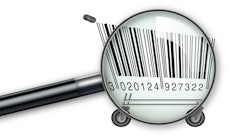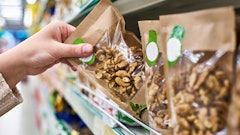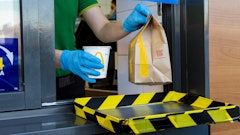
The food and beverage industry faces a complex challenge in optimizing packaging. Stringent regulations targeting carbon footprint, coupled with material shortages, are forcing manufacturers to rethink their packaging strategies. Specifically, new regulations addressing plastic packaging and traceability requirements are designed to reduce waste, improve the safety of products and increase efficiency. Now, manufacturers are held responsible for adjusting packaging strategies and adhering to these new regulatory hurdles.
Pending food and beverage packaging regulations
Previous efforts to address food and beverage packaging have resulted in extensive processes. For example, the Unites States Food and Drug Administration’s policies restricting the use of per- and polyfluoroalkyl substances (PFAS) represented a significant adjustment in food and beverage packaging. However, these regulations resulted in a decade-long process of replacing unauthorized substance use in packaging. The transition of packaging materials and regulations can result in a disruptive and extensive process.
Pending regulations include California’s latest proposal, which places greater emphasis on the need for recyclability in food packaging. Specifically, the regulation demands a 25% reduction in single use plastic packaging. The mandate requires that all single-use packaging and plastic be recyclable or compostable by 2032. Similarly, regulations globally indicate more aggressive restrictions on plastic use.
The European Union’s latest mandate banning single-use plastic packaging for fruits and vegetables, condiments in fast food restaurants and plastic grocery bags extends regulatory expectations for manufacturers. For example, specific regulations that require that 10% of products be made from reusable packaging mark intensified expectations that require manufacturers to broaden their approach to sustainable packaging.
While regulatory bodies establish these requirements, the responsibility falls on manufacturers and producers to ensure compliance. Adhering to these upcoming regulations requires the development of a comprehensive digital ecosystem that facilitates the integration of information across production processes.
A digital thread guides packaging compliance
Navigating the evolving regulatory landscape in food and beverage packaging demands a data-driven approach. A digital thread, a connected flow of information throughout a product’s lifecycle, evolves as a critical piece of this equation. By providing real-time insights into the packaging process, manufacturers optimize operations, maintain compliance and avoid penalties.
· Proactive risk management. By pinpointing deviations in real-time, the digital thread empowers manufacturers to address issues swiftly and prevent non-compliant packaging from reaching consumers. This translates to a more seamless production process with reduced risk of regulatory non-compliance.
· Streamlined quality assurance with automation. Machine-to-machine communication capabilities within production equipment automatically feed data into the digital thread. This eliminates potential errors from manual data entry and ensures accurate, real-time updates on packaging processes. Additionally, embedding sensors into packaging lines tracks metrics like temperature and pressure during sealing and sterilization, providing verifiable evidence of proper procedures.
· Data-driven optimization and visibility. Real-time access to data allows for swift adjustments due to regulatory changes or packaging inconsistencies. This transparency empowers manufacturers to optimize production processes for waste reduction. Furthermore, the digital thread serves as a verifiable record of packaging parameters, ensuring compliance and facilitating efficient decision-making.
· Enhanced compliance through traceability. A digital thread acts as a single source of truth, capturing data on materials, processes and quality checks throughout a product's lifecycle. This comprehensive record allows manufacturers to demonstrate compliance with regulations governing packaging materials.
By leveraging data-driven insights, manufacturers gain the knowledge to drive improvements throughout their production lines. This proactive approach not only empowers manufacturers to adapt to new regulatory hurdles but also strengthens overall efficiency, paving the way for a future-proof packaging strategy. By automating documentation and enabling real-time tracking across all operations, the digital thread ensures instant updates to regulations and procedures, guaranteeing seamless compliance. This real-time data becomes essential for continuous process optimization.
Food and beverage manufacturers face a constant challenge in keeping pace with ever-evolving regulations surrounding packaging. A comprehensive digital ecosystem offers a compelling solution for navigating this complex landscape. Embracing a digital thread allows food and beverage manufacturers to comply with regulatory guidelines and ensure product quality. As regulatory bodies increasingly monitor carbon and climate emissions, organizations will be required to monitor product lifecycle and verify compliance. Additionally, consumer preferences continue to drive the demand for sustainable packaging. Manufacturers should take advantage of this moment to invest in the proper technology that ensures products meet these guidelines. Finally, as organizations implement a digital thread, they will recognize the cost reduction benefit of identifying upcycling opportunities, reducing waste and increasing efficiency.


























